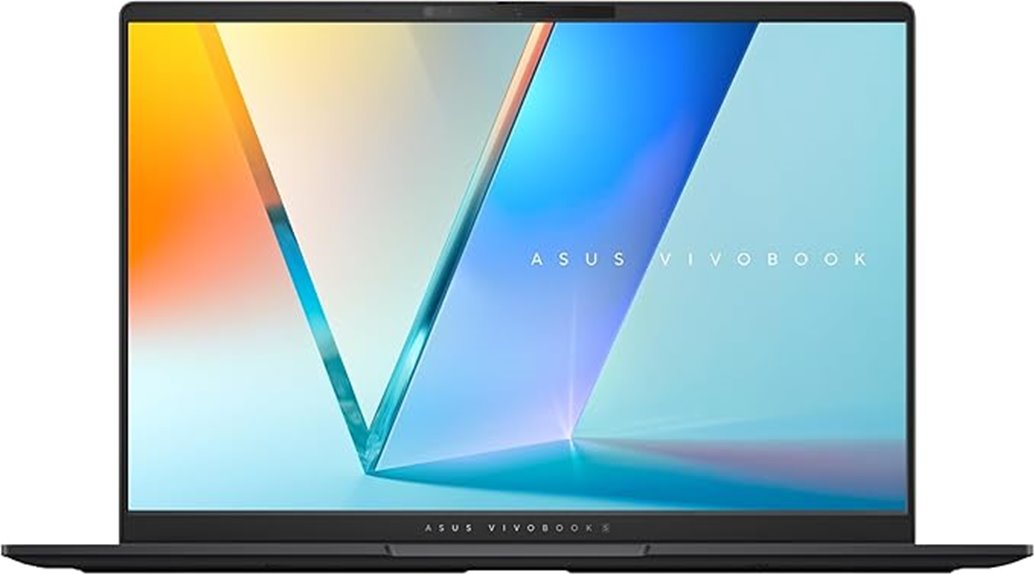Best Laptop for Multiple Monitors (Top 5 Picks for 2025)
If you want to maximize your productivity in 2025, consider the Apple 2024 MacBook Pro, Acer Swift X 14, Apple MacBook Air 15-inch, ASUS Vivobook S 14 OLED, and Samsung Galaxy Book4 Pro. These laptops offer powerful performance, vibrant displays, and ample memory for seamless multitasking with multiple monitors. You’ll enjoy features like fast charging and extensive connectivity options. Keep exploring to find out which laptop fits your specific needs best.
In the interest of full disclosure, we would like to inform you that some links on our website are affiliate links. By clicking on these links and completing a purchase from our partners, we may receive a nominal commission at no extra cost to you. Rest assured, our affiliate partnerships do not compromise the integrity of our editorial content or product evaluations. For further clarification, kindly refer to our comprehensive affiliate disclosure.
Table of Contents
What Are the Best Laptop for Multiple Monitors to Buy This Year?
Here are my top picks for the Best Laptop for Multiple Monitors you can consider this year.
Apple MacBook Pro Laptop with M4 Chip, 14.2-inch Display, 16GB RAM, 512GB SSD
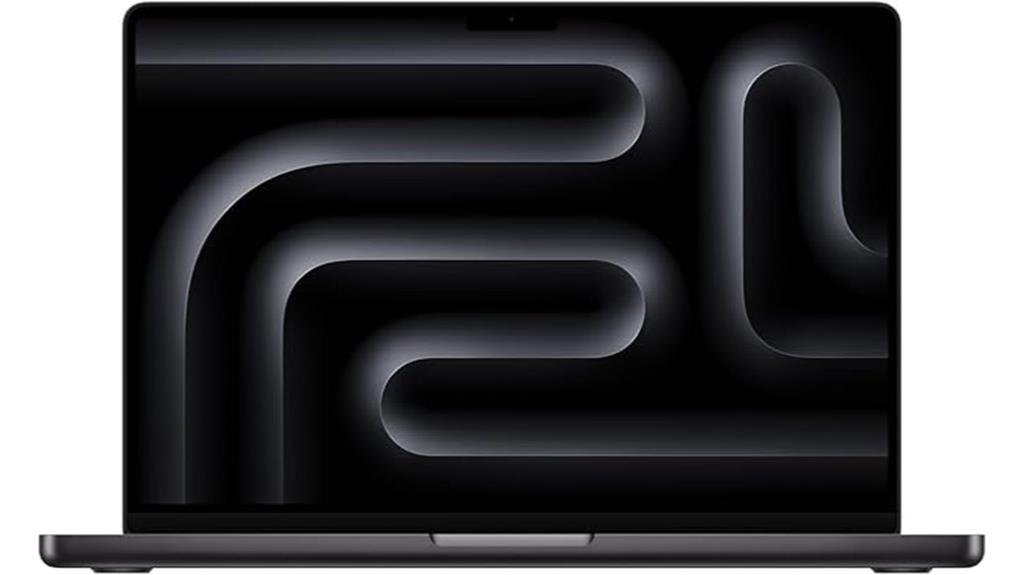
If you’re a creative professional or a multitasker who thrives on efficiency, the Apple 2024 MacBook Pro with the M4 chip is tailor-made for your needs. With its 10-core CPU and GPU, this laptop delivers exceptional speed for multitasking and running demanding apps. The stunning 14.2-inch Liquid Retina XDR display boasts 1600 nits peak brightness, ensuring your visuals are vibrant and clear. Plus, the 16GB of unified memory and 512GB SSD storage provide ample space for all your projects. Enjoy seamless integration with your other Apple devices, making multitasking across multiple monitors a breeze.
Best For: Creative professionals and multitaskers seeking a powerful and efficient laptop for demanding applications.
Pros:
- Exceptional performance with the M4 chip’s 10-core CPU and GPU for seamless multitasking.
- Stunning 14.2-inch Liquid Retina XDR display with vibrant colors and impressive brightness.
- Seamless integration with other Apple devices enhances productivity and user experience.
Cons:
- The 512GB SSD storage may be limiting for users with extensive file storage needs.
- Higher price point compared to non-Apple laptops with similar specifications.
- Limited upgrade options for memory and storage after purchase.
Acer Swift X 14 Laptop (SFX14-72G-77NJ)
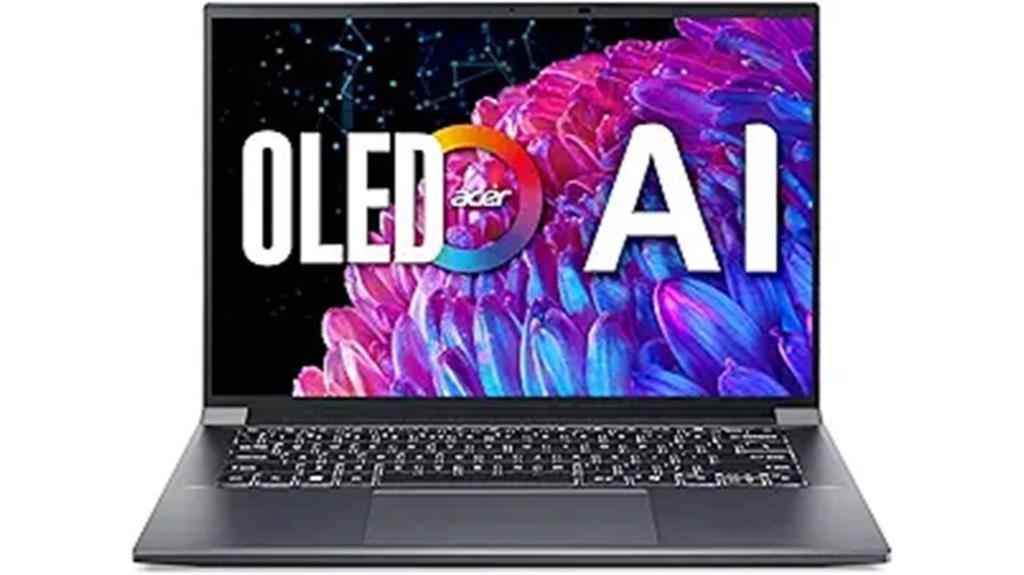
The Acer Swift X 14 Laptop (SFX14-72G-77NJ) stands out as an excellent choice for creative professionals and multitaskers who rely on multiple monitors. With its Intel Core Ultra 7 processor and NVIDIA GeForce RTX 4060 GPU, you’ll experience unmatched performance for demanding software. The stunning 14.5-inch OLED display delivers vibrant visuals while TÜV Rheinland certification minimizes eye strain. Plus, the centralized AI tools enhance your productivity further. Enjoy seamless connectivity with Killer Wi-Fi 6E and plenty of storage through its 1TB SSD. This laptop truly empowers you to maximize your workflow across multiple screens effortlessly.
Best For: Creative professionals and multitaskers looking for powerful performance and high-quality visuals in a portable laptop.
Pros:
- Exceptional processing power with Intel Core Ultra 7 and NVIDIA GeForce RTX 4060 for demanding applications.
- Stunning 14.5-inch OLED display with high resolution and TÜV Rheinland certification for reduced eye strain.
- Centralized AI tools and strong connectivity options enhance productivity and multitasking capabilities.
Cons:
- Limited upgradeability due to soldered RAM and non-removable components.
- Potentially high price point compared to non-OLED laptops with similar specifications.
- Weight may be heavier than other ultraportable laptops, making it less ideal for frequent travel.
Apple MacBook Air 15-inch Laptop with M4 chip
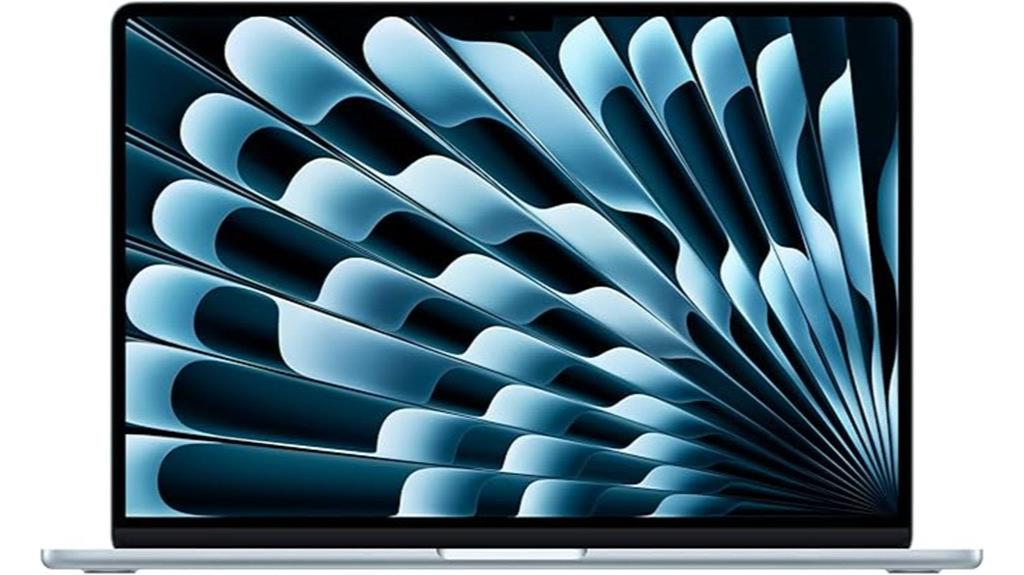
For professionals and creatives who demand high performance and versatility, the Apple MacBook Air 15-inch with the M4 chip stands out as an ideal choice for managing multiple monitors. Its powerful M4 chip ensures smooth multitasking, video editing, and gaming, while the 15.3-inch Liquid Retina display brings your visuals to life, supporting a billion colors. Thanks to an impressive battery life of up to 18 hours, you can work unplugged without sacrificing performance. With two Thunderbolt 4 ports, it easily connects to external displays, making it perfect for your multi-monitor setup. Plus, robust privacy features keep your data secure.
Best For: Professionals and creatives seeking high performance and versatility in a laptop for multitasking and multi-monitor setups.
Pros:
- Powerful M4 chip enables seamless multitasking, video editing, and gaming with enhanced speed.
- Stunning 15.3-inch Liquid Retina display supports 1 billion colors for rich visuals and sharp detail.
- Long battery life of up to 18 hours allows for extensive use without needing to recharge.
Cons:
- Limited port variety with only two Thunderbolt 4 ports and a headphone jack, which may require adapters for additional connections.
- Higher price point compared to other laptops with similar specifications, making it less accessible for budget-conscious buyers.
- No dedicated graphics card, which might limit performance for extremely graphics-intensive applications.
ASUS Vivobook S 14 OLED Slim Laptop (M5406WA-DS76)
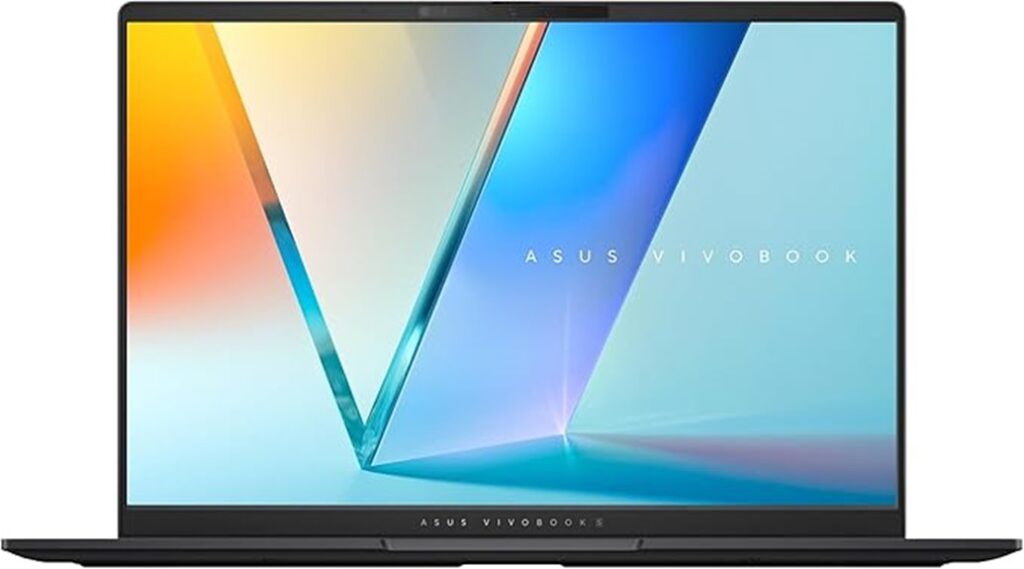
Designed for multitaskers and creatives, the ASUS Vivobook S 14 OLED Slim Laptop (M5406WA-DS76) excels with its stunning 14” 3K OLED display. With a blazing-fast AMD Ryzen 9 365 processor and 24GB of LPDDR5X RAM, you’ll experience seamless multitasking. The 120Hz refresh rate and 0.2ms response time ensure smooth visuals, perfect for video editing or gaming. Weighing just 2.87 lbs and measuring 0.63” thick, it’s highly portable. Plus, the customizable RGB backlit keyboard enhances your typing experience. With multiple USB and HDMI ports, you can easily connect to multiple monitors and maximize your productivity effortlessly.
Best For: Professionals and creatives seeking a powerful, portable laptop with a stunning display for multitasking and content creation.
Pros:
- Exceptional performance with an AMD Ryzen 9 365 processor and 24GB LPDDR5X RAM for seamless multitasking.
- Stunning 14” 3K OLED display with a 120Hz refresh rate and 600nits peak brightness for vibrant visuals.
- Lightweight and slim design, making it highly portable for on-the-go use.
Cons:
- Higher price point compared to entry-level laptops may not be suitable for budget-conscious buyers.
- Limited storage capacity with a 512GB SSD, which may require external storage solutions for heavy users.
- The RGB backlit keyboard may not appeal to everyone and could be seen as a distraction.
Samsung Galaxy Book4 Pro Business Laptop (NP944XGK-KG4US)
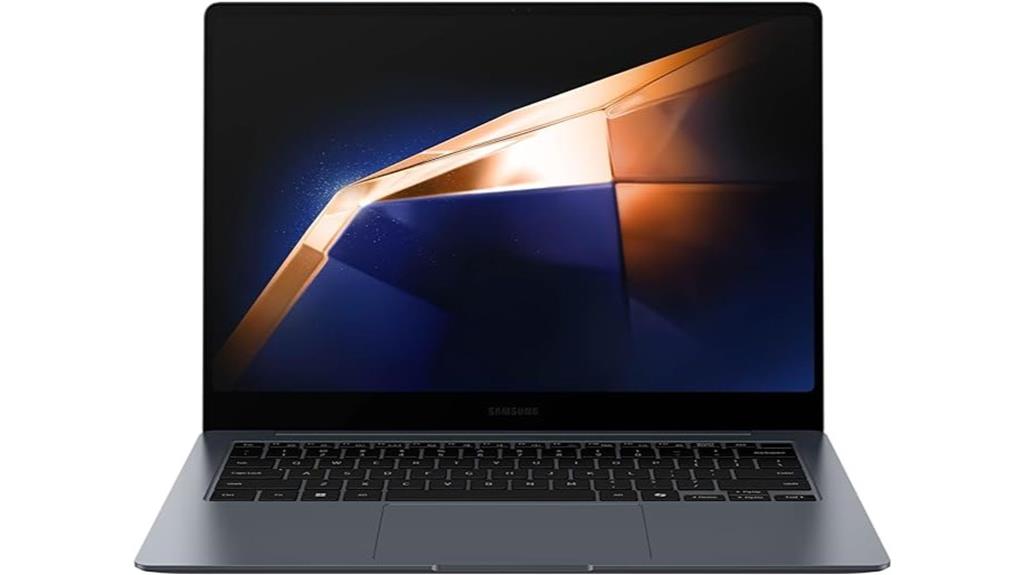
If you’re a professional who needs seamless multitasking across multiple monitors, the Samsung Galaxy Book4 Pro (NP944XGK-KG4US) stands out with its impressive Intel Core Ultra 7 processor and 32GB of RAM. Weighing just 2.71 lbs and featuring a sleek 14-inch 3K AMOLED touchscreen, it’s designed for portability and clarity. Its robust connectivity options, including Thunderbolt 4 and HDMI, ensure easy integration with external displays. The fast charging capability and 8-hour battery life help keep you productive throughout your day. With Samsung’s security features, you can work confidently, making this laptop an excellent choice for business professionals.
Best For: Professionals who require a powerful, portable laptop for multitasking, video conferencing, and presentations.
Pros:
- Powerful Performance: Equipped with an Intel Core Ultra 7 processor and 32GB of RAM for seamless multitasking.
- High-Quality Display: Features a stunning 14-inch 3K AMOLED touchscreen for enhanced clarity and vibrant visuals.
- Robust Connectivity: Offers multiple ports including Thunderbolt 4 and HDMI for easy integration with external devices.
Cons:
- High Price Point: Retail price of $1749 is considered expensive compared to competitors with similar specifications.
- Limited RAM Upgrade Options: Maximum RAM upgrade is restricted to 16GB in certain regions like the US, Canada, and UK.
- Perceived SSD Quality: OEM SSD from Western Digital is viewed as lower quality for the price compared to others in the market.
READ MORE: Best Laptops for Penetration Testing, Best Laptops for Mechanical Engineering, Best Laptops for Investment Banking, Best Laptops for Insurance Adjusters, Best Laptops for Plc Programming, Best Laptops for Word and Excel, Best Laptops for Social Media Marketing, Best Laptops for Heavy Excel Use, Best Laptops for Spreadsheets, Best Laptops for Freelancing
Factors to Consider When Choosing the Best Laptop for Multiple Monitors
When you’re choosing a laptop for multiple monitors, you need to consider several key factors. Display resolution compatibility, graphics processing capability, and RAM size are crucial for optimal performance. Don’t forget to check the connectivity options and keep portability and weight in mind for your on-the-go needs.
Display Resolution Compatibility
Choosing a laptop for multiple monitors requires careful consideration of display resolution compatibility to ensure optimal performance. First, make sure your laptop’s graphics card can handle the combined resolution of all your displays. For instance, if you have a 4K laptop, it should support multiple 1080p monitors without issues. Next, check the maximum supported resolution for each output port—HDMI, DisplayPort, and USB-C can vary greatly. Don’t forget about refresh rates; higher rates like 120Hz demand more from your graphics card. Lastly, verify that your laptop’s CPU and GPU can manage the increased load, especially for graphically intensive tasks, and ensure it has enough connectivity options, like multiple Thunderbolt or HDMI ports, to connect your monitors directly.
Graphics Processing Capability
Understanding display resolution compatibility sets the stage for evaluating your laptop’s graphics processing capability, which plays a pivotal role in managing multiple monitors. A powerful GPU is essential for smooth rendering across screens, so consider laptops with dedicated graphics cards like NVIDIA or AMD. These provide superior multitasking performance compared to integrated graphics. Pay attention to VRAM; more of it significantly enhances your laptop’s ability to handle high-resolution displays, especially 4K. Features like MUX switches can optimize performance by allowing you to switch between integrated and dedicated graphics, improving power efficiency. Lastly, ensure your laptop supports multiple display outputs—look for HDMI, DisplayPort, or Thunderbolt connections to drive three or more monitors simultaneously without sacrificing performance.
RAM Size Considerations
While managing multiple monitors, you’ll quickly realize that RAM size plays a crucial role in ensuring smooth multitasking. For optimal performance, aim for at least 16GB of RAM. This amount will help you efficiently handle multiple applications across your screens without lag. However, if you’re tackling demanding tasks like video editing or graphic design, consider upgrading to 32GB or more. The type of RAM also matters; LPDDR5X can offer better speed and efficiency compared to standard DDR4, especially with high-resolution displays. Additionally, pay attention to RAM speed in MHz, as quicker processing rates are vital for tasks needing real-time updates. More RAM allows for more open applications and tabs, enhancing your overall experience on multiple monitors.
Connectivity Options Available
When you’re setting up a laptop for multiple monitors, the right connectivity options can make all the difference. Look for laptops with multiple USB-C or Thunderbolt 4 ports; these can support display outputs and power delivery at the same time. HDMI 2.1 or DisplayPort capabilities are essential, as they allow for higher resolutions and refresh rates, ensuring a smooth experience. Check if the integrated graphics can handle multiple displays without lag, and verify the maximum number of external displays your laptop’s GPU can support. Additionally, USB-C Alt Mode support is a feature to consider, as it enables USB-C ports to output video signals, giving you versatile connectivity options for your setup.
Portability and Weight
Choosing a laptop for multiple monitors involves considering portability and weight, especially if you plan to move between locations frequently. Lighter models, typically under 3 lbs, are easier to transport, making your work setup more convenient. Look for laptops with a slim profile, ideally around 0.6 inches thick or less, to reduce bulk during travel. Durability is also key; select a laptop designed to withstand the rigors of transport while offering robust connectivity for multiple displays. Ensure it features advanced options like Thunderbolt ports, which support multiple monitors without compromising portability. These factors will help you maintain productivity on the go while ensuring a seamless multi-monitor experience wherever you work.
Battery Life Performance
Battery life performance is crucial for anyone using multiple monitors, especially for resource-intensive tasks like video editing or gaming. When you’re running dual displays, you’ll notice that battery reserves can deplete quickly due to increased processing demands. Ideally, look for a laptop that exceeds 8 hours of battery life under maximum load to keep you productive throughout the day. High-resolution displays and refresh rates, such as 3K at 120Hz, can further drain power, so choose a laptop that optimizes battery usage without sacrificing graphics quality. Fast charging features are also a plus, allowing you to quickly recharge during breaks. Lastly, efficient CPUs and GPUs can help manage power consumption while delivering the performance you need for multitasking.
Operating System Compatibility
To effectively manage multiple monitors, you’ll want to ensure that your laptop’s operating system supports the necessary display configurations. Different OS versions can limit your multi-display functionalities, so check compatibility. You’ll also need to verify that the OS recognizes the available ports like HDMI and Thunderbolt, as these directly affect your connection options. Additionally, consider whether the operating system provides features like extended desktop mode, which allows for a larger workspace across screens. Finally, make sure your laptop’s graphics capabilities, dictated by the OS, can handle the resolution and refresh rates of your displays. This compatibility will significantly enhance your productivity when working with multiple monitors.
Price and Value Assessment**
When evaluating laptops for multiple monitors, several key factors can significantly influence your decision. First, look at the cost-to-performance ratio, ensuring the processor and graphics capabilities can handle the additional display outputs without lag. You’ll also want to evaluate RAM and storage; insufficient memory can slow down multitasking across screens. Check for Thunderbolt or HDMI ports, as these facilitate easy connectivity to multiple monitors, impacting overall value. Battery life matters too; a high-performance laptop with poor battery efficiency won’t serve you well for mobile work. Lastly, consider warranty and support options. Robust customer service and extended warranties enhance value, especially in setups where reliability is crucial for your productivity.
Frequently Asked Questions
Can I Connect Multiple Monitors to Any Laptop Model?
You can connect multiple monitors to many laptop models, but it depends on the laptop’s specifications. Check for available ports, graphics capabilities, and support for external displays to ensure compatibility with your setup.
What Ports Are Necessary for Multiple Monitor Connections?
To connect multiple monitors, you’ll need HDMI, DisplayPort, or USB-C ports. Some laptops require adapters for compatibility. Make sure your laptop supports the desired number of displays to enhance your productivity effectively.
How Do I Adjust Display Settings for Multiple Monitors?
To adjust display settings for multiple monitors, right-click on your desktop, select “Display settings,” and configure the arrangement, resolution, and orientation for each monitor. Don’t forget to apply changes for a seamless experience!
Will Using Multiple Monitors Drain My Laptop’s Battery Faster?
Yes, using multiple monitors can drain your laptop’s battery faster. Each additional display consumes power, so you’ll notice a decrease in battery life. To mitigate this, consider adjusting brightness and disconnecting monitors when not in use.
Are There Specific Software Recommendations for Managing Multiple Displays?
For managing multiple displays, you’ll find software like DisplayFusion, UltraMon, and Microsoft’s built-in settings helpful. These tools enhance your productivity by allowing easier window management and customizable display configurations to suit your workflow.
My Final Opinion
In 2025, enhancing your productivity with the right laptop for multiple monitors is crucial. Whether you’re drawn to the power of the Apple MacBook Pro or the sleek design of the Acer Swift X, each option offers unique advantages. Consider your specific needs, like processing power and display quality, to find the perfect fit. With the right choice, you’ll transform your workspace and boost your efficiency, making multitasking a breeze. Happy computing!
